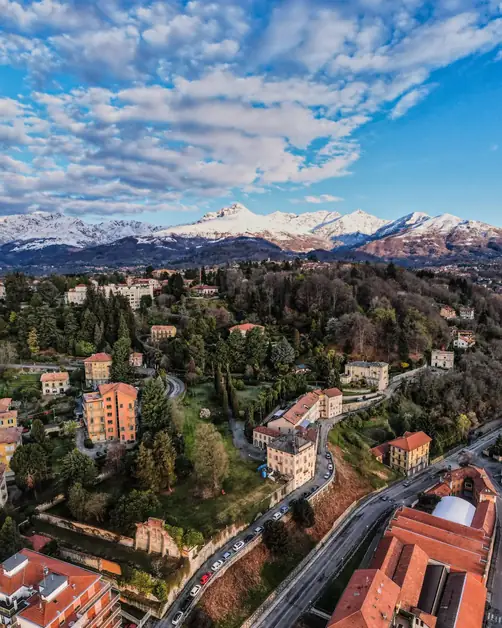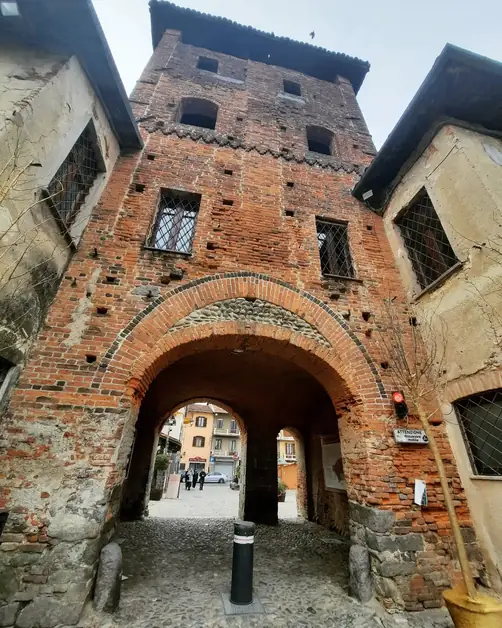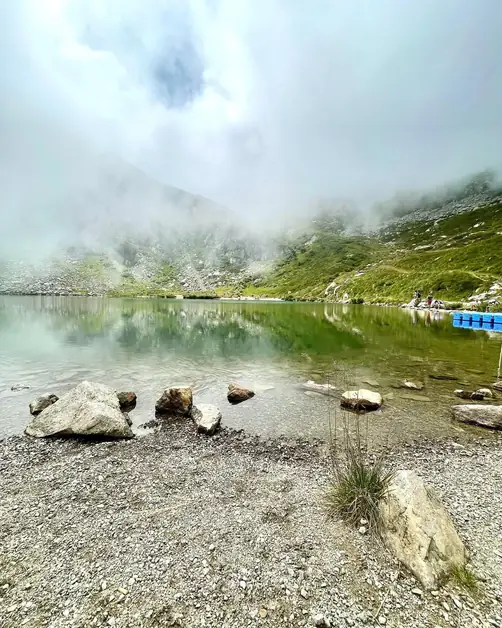Complete guide to reaching Biella from Milan and Turin
Learn how to reach Biella from Milan and Turin by car or train.

Where is Biella and why visit it?
Biella is located in Piedmont, at the foot of the Biella Alps, in a strategic position between Turin and Milan. It is a welcoming city, rich in history, art, and nature, famous for the Sanctuary of Oropa, its fine fabrics, and mountain views. Reaching it is easy both by car and by train, thanks to a well-organized network of connections linking it to the main centers of Northern Italy. In this guide, we will discover how to get to Biella from Milan and Turin, the travel times, the main roads, and where the train station is located in relation to the city center.
How to get to Biella by car from Milan?
From Milan to Biella, the distance is about 110 kilometers, which can be covered in about 1 hour and 30 minutes. The most convenient route is via the A4 Turin-Milan motorway. Here’s how to proceed: 1. Enter the A4 motorway towards Turin. 2. Exit at the Carisio toll booth (indication for Biella). 3. Follow the SP230 towards Biella for about 20 kilometers. The road is smooth and crosses the Piedmont plain, with agricultural landscapes and small villages. Alternatively, those coming from the northern area of Milan can choose the A26 Genoa-Gravellona Toce expressway, exiting at Romagnano Sesia and continuing towards Gattinara and Cossato until Biella. This latter route is slightly longer but offers very pleasant scenic views.
How to get to Biella by car from Turin?
From Turin, the distance to Biella is about 85 kilometers, and the average travel time is 1 hour and 15 minutes. The most direct route is: 1. Enter the SP143 or SP228 until the entrance to the A4 motorway. 2. Take the A4 towards Milan. 3. Exit at the Santhià or Carisio toll booth and follow the signs for Biella. Those who prefer to avoid the motorway can follow the SP143 Turin-Ivrea-Biella, which crosses rural landscapes and hills. This route is slower but very picturesque, ideal for those who want to discover authentic Piedmont, among fields, vineyards, and small towns. During the trip, a stop can be made in Ivrea, a UNESCO World Heritage city for its industrial architecture.
What are the travel times by car?
* From Milan to Biella: about 1 hour and 30 minutes with regular traffic. * From Turin to Biella: about 1 hour and 15 minutes. * From Malpensa Airport to Biella: about 1 hour and 20 minutes, passing through Galliate and Romagnano Sesia. * From Caselle Airport (Turin) to Biella: about 1 hour and 10 minutes. The main roads are well maintained, and traffic is good throughout the year. In winter, however, it may be useful to check the weather conditions, as the Biella area is located at the foot of the mountains.
How to get to Biella by train from Milan?
Biella is not directly connected to Milan by high-speed train, but it can still be reached by regional and fast regional connections. The journey takes on average 1 hour and 45 minutes with a change. Here are the two most practical options: 1. From Milan Porta Garibaldi or Milan Centrale to Santhià (about 1 hour of travel) with regional or Intercity trains. From Santhià, take the regional train to Biella San Paolo (duration about 25 minutes). 2. Alternatively, you can arrive in Novara (50 minutes from Milan Centrale) and from there take a regional train to Biella passing through Cossato (about 1 hour and 10 minutes total). Trains are frequent, especially on weekdays. The journey is comfortable and allows you to admire the Piedmontese landscapes, passing from the Vercelli rice fields to the Biella hills.
How to get to Biella by train from Turin?
From Turin Porta Susa or Turin Porta Nuova, regional trains depart directly for Santhià, with a duration of about 40 minutes. From Santhià, change for the regional train directly to Biella San Paolo, with another 25 minutes of travel. The total travel time is therefore about 1 hour and 10 minutes. Some direct regional trains from Turin to Biella are active during peak hours or on weekdays, so it is advisable to check the updated schedules on the Trenitalia or Trenord website.
Where is the Biella train station located?
The main station is Biella San Paolo, located in Piazza San Paolo, about 10 minutes on foot from the city center. The location is very convenient for tourists: in a few minutes you can reach Via Italia (the main shopping street), the Baptistery of San Giovanni Battista, and the Church of San Sebastiano. At the station exit, there are taxis, urban bus stops, and a parking lot for those who need to continue by car. The station is modern, well signposted, and equipped with services such as automatic ticketing, a bar, and a waiting room.
Are there direct connections with airports?
Biella does not have an airport, but it is easily reachable from two of the main airports in Northern Italy: Milan Malpensa and Turin Caselle. From Malpensa, you can reach Biella by car in about 1 hour and 20 minutes, or by train taking the Malpensa Express line to Novara and then a regional train to Biella. From Turin Caselle, you can arrive in about 1 hour by car or take the train to Turin Porta Susa and then continue to Biella via Santhià.
How to get around once you arrive in Biella?
The center of Biella is easily visitable on foot, thanks to its small size and numerous pedestrian paths. To reach the higher neighborhoods, such as Piazzo, you can use the panoramic funicular that connects the lower and upper parts of the city. Those who want to explore the surroundings can rely on extra-urban buses that connect Biella to Oropa, the Ponte della Pistolesa, Monte Mucrone, and the villages of the Biella area.
Why choose Biella as a travel destination?
Biella is a city that combines nature, culture, and tranquility. Thanks to the simple and quick connections from Milan and Turin, it is an ideal destination for a day trip or a weekend, but also for those who wish to explore the mountainous landscapes of Piedmont without straying too far from the big cities. Reaching it is easy, and every trip to Biella offers the thrill of discovering an authentic and welcoming territory.


